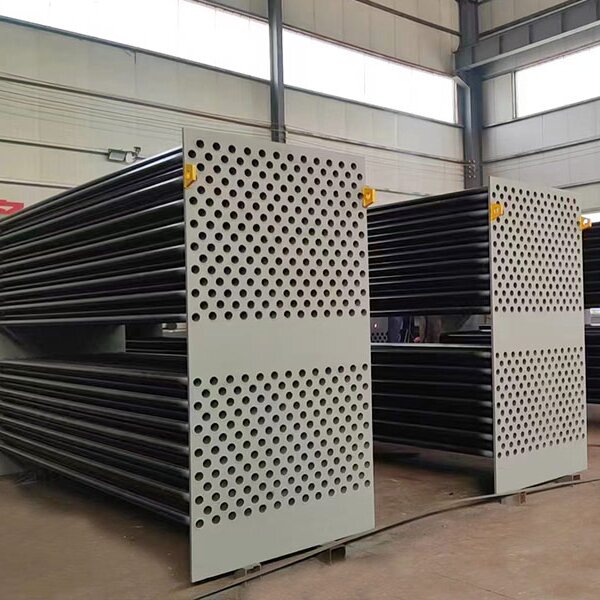Types and Applications of Air Preheaters
1、 The function of air preheater:
The functions of an air preheater include:
(1) Lowering the exhaust gas temperature improves boiler efficiency. With the increase of working fluid parameters in the power plant cycle, due to the use of a regenerative cycle, the extraction steam of the steam turbine is used to heat the feedwater, and the temperature of the feedwater entering the boiler becomes higher and higher. The feedwater temperature increases from 150 ℃ at medium pressure to 260 ℃ at subcritical pressure. The function of using an economizer to lower the exhaust gas temperature in low-pressure boilers decreases with the increase of boiler feedwater temperature. Only using an economizer cannot economically lower the exhaust gas temperature of the boiler, and even cannot lower it to a suitable temperature. However, the temperature of the air is low. If the exhaust gas at the outlet of the economizer is used to heat the air required for combustion, the exhaust gas temperature can be further reduced and boiler efficiency can be improved
(2) Improving the ignition conditions and combustion process of fuel reduces incomplete combustion losses and further enhances boiler efficiency. For fuels that are difficult to ignite, such as smokeless coal, the air is often heated to around 400 ℃
(3) Hot air enters the furnace, increasing the theoretical combustion temperature and enhancing the radiation heat transfer of the furnace, further improving the thermal efficiency of the boiler
(4) Hot air is also used as a desiccant and powder conveying medium in the coal powder boiler pulverizing system. In view of the above points, air preheater has become an indispensable component of modern boilers. For low-pressure boilers, due to the low feedwater temperature, economizer can effectively cool the flue gas to a reasonable temperature, and there is often no air preheater. However, some industrial boilers have a feedwater deoxygenated temperature of only 104 ℃. In order to improve the ignition and combustion conditions, air preheater is also used. For industrial furnaces with fire bed combustion, due to the limitation of grate temperature, even with air preheater, the air temperature does not exceed 150-180 ℃
2、 Classification of Air Preheaters:
Air preheaters are mainly divided into three types: tubular air preheaters, plate air preheaters, and rotary air preheaters.
Tube type air preheater: Its main heat transfer components are thin-walled steel pipes, usually in a cubic shape, arranged vertically and staggered with each other, and welded at both ends to the upper and lower tube plates. The advantages of tubular air preheater are good sealing and high heat transfer efficiency, which are suitable for power plant boilers and industrial boilers. However, its disadvantages are large volume, easy ash blockage, and difficult cleaning.
Plate type air preheater: It is formed by welding multiple plates, forming channels of different widths between the plates. The flue gas and air flow separately in the channels, and the purpose of heating the air is achieved through wall to wall heat exchange. The advantage of a plate type air preheater is its simple structure, but it consumes a lot of steel, has a less compact structure, has multiple welds, and is prone to leakage, so it is currently used less frequently.
Rotary air preheater: This is a type of regenerative air preheater that uses a rotor to absorb heat on the flue gas side and transfer it to the air through the air side. The advantages of rotary air preheater are small size and light weight, suitable for use in large boilers, but its structure is complex, consumes a lot of electricity, and has a large amount of air leakage.


